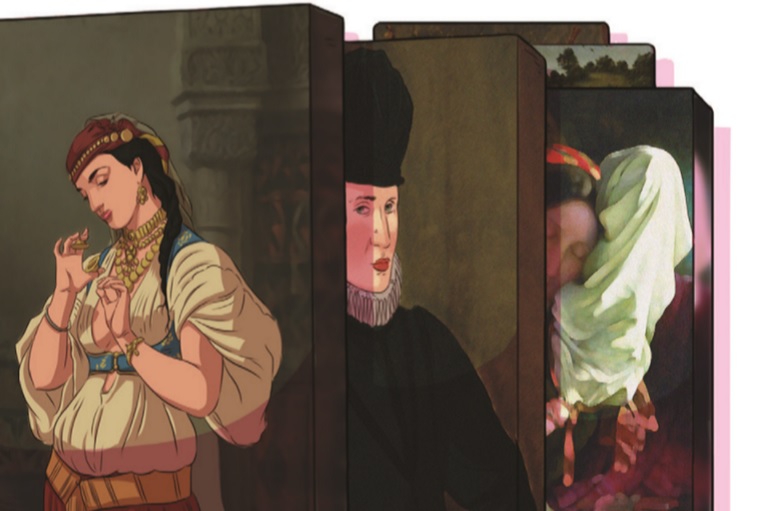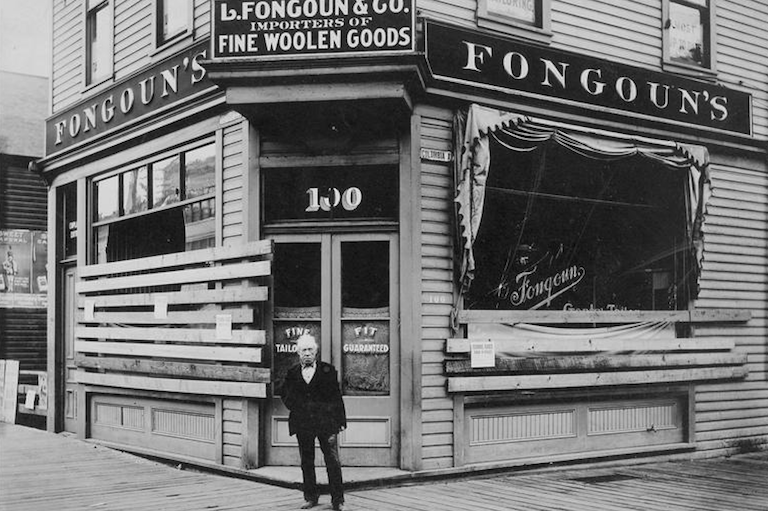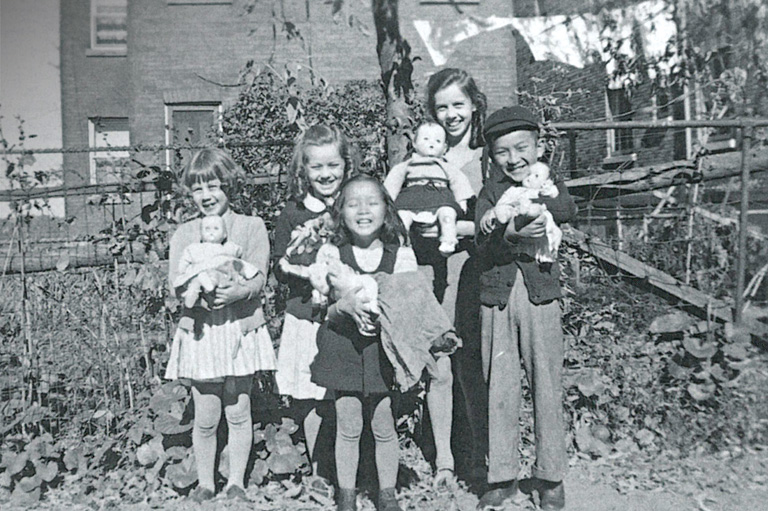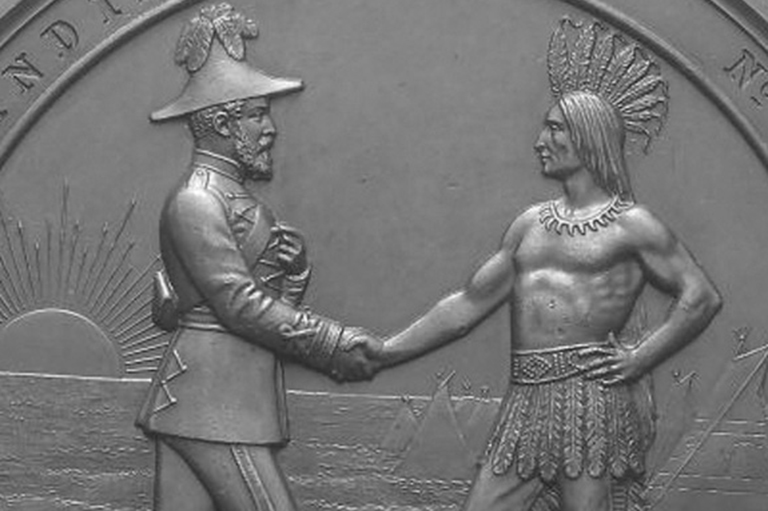A Shared History Through Food
Grade Levels: 3/4, 5/6, 7/8
Subject Areas: Social Studies, History, Language Arts
This lesson is inspired by the article “Nine Foods (and One Drink)” in the “Settling in Canada” issue of Kayak: Canada’s History Magazine for Kids (March 2021).
Lesson Overview
Students will read about the foods and drink featured in the article “Nine Foods (and One Drink)” and then discuss how both settlers and Indigenous peoples used / transformed these foods. Students will then discuss traditional foods they associate with “home” (whether it be traditional foods, family favourites, or foods associated with holidays that they celebrate). The culminating activity will be the creation of a “publishing-ready” work that features their chosen recipes and a personal reflection about the recipe they chose, including personal details recording their own history.
Time Required
5 lessons (depending on grade level, lessons could be split into more than one part)
Historical Thinking Concept(s)
- Identify continuity and change
- Use primary source evidence
Learning Outcomes
Students will:
- Discuss different foods and recipes and debate whether recipes would be considered as primary source documents for historians;
- Select a recipe with personal significance and explain their connection to this recipe;
- Compose a biography which concludes with the personal connection to the recipe they have chosen;
- Create a “publishing-ready” work featuring their chosen recipe, their biography and their personal connection to the recipe.
Background Information
Food, and the cultural significance of food, is integral to human history, and certain foods are associated with specific times. The article “Nine Foods (and One Drink)” features a short list of some of the foods that were integral to the colonial period in what is now Canada.
Throughout history, millions have come to Canada to live, settling on territory first occupied by Indigenous people. This history of immigration has affected what Canadians eat and when they eat it.
By looking at recipes from Canada’s past and comparing them to a recent (December 2020) recipe book celebrating the success of refugees to Canada, students have an opportunity to made direct connections between the past and the present. Students will consolidate their understanding of what primary source documents reveal about different aspects of history, and how their writing could become a primary source document to a future historian.
Lesson Activity
Activating: How will students be prepared for learning?
Lesson 1:
Read and discuss the foods featured in the article “Nine Foods (and One Drink).”
Ask students how many of those foods they have eaten and discuss why some are rarely (if ever) eaten today.
Sort students into small groups and ask them to discuss their favourite foods and/or traditional foods, and whether they know anything about the history (either personal or general) behind the foods.
Whole group discussion will focus on making personal connections to the foods they have discussed.
Lesson 2:
Part 1 - Discuss how foods become family favourites or traditions. Scaffold based on grade level and classroom demographics.
Questions for discussion may include:
- When people immigrate to Canada, do they bring their traditional recipes with them?
- Can the access (or lack of access) to certain ingredients affect whether those recipes can be used, and does it have the potential to alter recipes?
- Are traditional holidays a source of special recipes in their experience?
- How has the global nature of our world changed access to certain ingredients?
- What effect does living in a remote community have on the ability to access certain ingredients (fresh / seasonal / specialty)?
Part 2 - Introduce the concept of recipe books / recipe cards, and how technology has changed how we record recipes.
Ask how recipes are used in their life (recipe cards, written in a book, published cookbooks, online).
Discuss how different food companies (flour, sugar, molasses, etc.) have published cookbooks over the last century as a marketing tool. Look at the classic Canadian “Purity Cookbook” (c. 1932, Revised 1945). Depending on age and background knowledge, discuss why there was a “Depression” version and an end of the Second World War version (poverty, rationing, shortages for different reasons). Then look at “The All New Purity Cook Book (c. 2001, first publishing 1967). Discuss the significance of the date — Canada's Centennial — and why it might have been reprinted. Note: There are many other examples of Canadian food company cookbooks or other cookbooks (in English and French) which could be used instead of the Purity Cookbook.
Finally, look at the “Tastes From Home: Recipes From the Refugee Community,” which was e-published in 2020 to commemorate the 70th anniversary of the United Nations High Commissioner for Refugees. Discuss how this cookbook is available for free (it’s a fundraiser for refugee families, supported by anonymous donors through the download process) and has no printed copy available. Why is 2020 significant (70th anniversary, also the COVID-19 pandemic response)?
TWO BIG QUESTIONS – Are recipes primary source documents? Can we use them to learn more about a specific time and place? Discuss and debate. Look at recipe articles in The Canadian Encyclopedia for evidence for and against this topic.
“HOMEWORK” – Bring in a recipe that has significance to you personally and that you would like to share with the class. Be ready to discuss the source (family / published book / website) and why it is significant to you.
Acquiring: What strategies facilitate learning for groups and individuals?
Lesson 3:
Sharing / discussing recipes.
In small groups, have students discuss the recipes they want to share.
Possible discussion points within groups may include:
- Are recipes within the group for a similar part of a meal (appetizer, main dish, side dish, dessert, beverage)?
- Are there similar sorts of main ingredients (meat / meatless / flour / dairy / non-dairy / Halal / Kosher / etc.)?
- Are recipes related to special occasions and/or ethnicities?
- Are recipes in similar format (traditional cookbook / handwritten / web-based)?
Return to large group to share findings (either orally or through the use of “Post-it” / chart paper organizers) and discuss.
BIG QUESTION – In a group of people with different backgrounds and experiences, what are the similarities / differences between the recipes, their provenance, and how they are recorded? What may cause this (shared experience / access to ingredients / diverse backgrounds / ethnicity / etc.)?
Applying: How will students demonstrate their understanding?
Lesson 4:
Review the UNHCR “Tastes from Home” cookbook in order to introduce / review the concept of biography.
Students will record their recipe (photo of recipe card or recipe book page / link to website) and then write a short biography. In addition to the biography, they will then write a personal reflection on why they selected the recipe they did, and how it relates to their own personal history (thus creating a primary source document for future historians to examine).
Lesson 5:
Students will work with a partner to edit and revise their written work and prepare it for publishing.
Once editing and revising is finished, students may choose how to “publish” their piece (handprinted / handwritten / word processed / online slide format / pamphlet / etc.). Reminder: review attribution of images, webpages, and any other sources related to intellectual property.
Once completed, students will be encouraged to share their stories beyond the teacher audience, and with their peers.
Materials/Resources
- UNHC Cookbook Download: This is a free download but it requires identifying information (name, email and phone number), so teachers may choose to download and share via a whiteboard or by sharing their screen in any online meeting platform.
- Examples of marketing links using recipes:
- Examples of recipe articles from The Canadian Encyclopedia:
- Examples of Canadian media links:
- “10 Throwback Recipes from Canadian History,” Food Network Canada
- “Cookbooks of the past offer food for thought on Canada’s national cuisine,” Globe and Mail
Extension Activities
- Provenance of a Recipe – How far back can you trace where a recipe came from (particularly in the case of family recipes)? Starting with the student’s recipe, how many generations can a specific recipe be traced back within a family? Are there recipes that are used that haven’t been written down (i.e. are passed down through oral traditions and/or kitchen cooking experience from generation to generation)?
- Artifact Sharing – Bring in a personal kitchen item or picture of one (tools / serving dishes / cutlery / etc.) and discuss their importance within the cooking routines in their household. What might their value as artifacts be to future historians studying social history in Canada?
- Classroom Cookbook – Focus on “Family Recipes” and create a classroom cookbook of recipes not already officially published in cookbooks or online. This could be shared in a digital or print format.
- Classroom Cooking Days – Discuss foods they might want to try and that could be prepared at school.
- Indigenous Cooking Days – Three Sisters Soup with Bannock, etc.
- European Settler Cooking Days – Baked Beans and Bread, etc.
- Classroom Feast Days – Bringing in favourite foods to share.
Themes associated with this article
Advertisement




